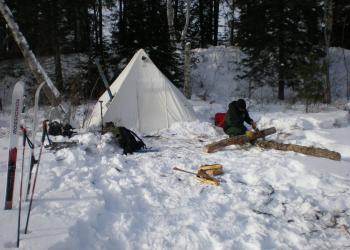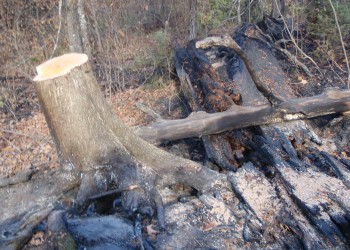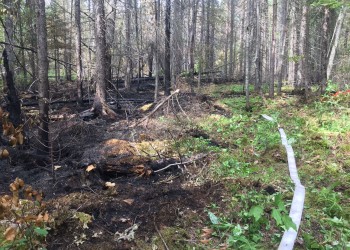Stay Safe
Before You Leave Home
Check current Minnesota Department of Natural Resources (MN DNR) fishing, hunting and watercraft regulations before your trip including:
- Canoe, kayak, standup paddleboard and watercraft registrations
- Fishing licenses and trout stamps
- Fishing limits and possession of fish
Bring survival gear to prevent becoming injured or lost:
- Water proof pouch
- Emergency blanket
- Sleeping bag and tent
- Water filter or purifier
- First aid kit and necessary medications
- Weather radio
- Hunting seasons
- Watercraft lights
For more information, contact the MN DNR or call 888-646-6367
Visiting in Winter
Winter Camping in Boundary Waters Canoe Area Wilderness

Visiting Boundary Waters Canoe Area Wilderness in winter presents a unique challenge for visitors. Make sure to plan ahead for your winter excursion.
Leave No Trace

How to leave no trace when visiting the Superior in the winter months:
- Planning ahead
- Trails
- Camping
- Disposing of Waste
Watch for Wildfire Hazards
Wildfires can pose risks to firefighters and the public even after they are contained. It is important to use extreme caution and good judgment when in fire-impacted areas due to the ongoing dangers that can be difficult to identify.
After the Flames the Risk Remains!
If you are entering an active fire area watch out for:
Fire-weakened Trees

Wildfires can damage a tree’s roots, trunk, and canopy. Winds can bring down fire-damaged trees and branches, causing injury and/or death. Stay out of burned forests during windy conditions, as trees are easily downed by wind.
Photo: trees weakened by a fire.
Unstable Structures

Use extreme caution around trees, power poles, and other tall objects or structures that may have lost stability during the fire. Most burned structures and surfaces will be unstable. Do not touch any power lines.
Photo: Powerlines along a road.
Ash Pits and Burned Stump Holes/Root Chambers

Ash pits are an inherent and hidden risk that can cause severe burns and injuries. They are created when a ground fire consumes underground fuels creating an empty space that isn't visible rom the surface.
Burned stumps may create rather obvious large holes, but these holes can be bigger. Sometimes, a fire travels through tree roots and consumes parts of the roots resulting in but leaves unstable root systems that can collapse under a person's or vehicles' weight. Be especially wary after a rain event which can cause them to collapse easier!
Photo: A burned out area next to a fireline.
Hazardous Materials and Toxic Fumes

Smoke within a fire area can be very dangerous. Burning building materials can emit toxic gases, releasing contaminants into the air. High temperatures during a fire can compromise hazardous material containers, leaking their contents onto the ground.
Photo: Smoke warning during a fire.
Recreate Responsibly and Safely

The public plays a valuable role in wildfire prevention. On average, 9 out of 10 wildfires are caused by humans each year, especially near roads, communities, and recreation areas. Help prevent future wildfires! Remember, you are ultimately responsible for your own safety and well-being when recreating in fire-impacted areas.
Photo: An illegal campfire.
Helpful Tips
Remember: You are responsible for your safety and for the safety of those around you


